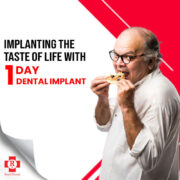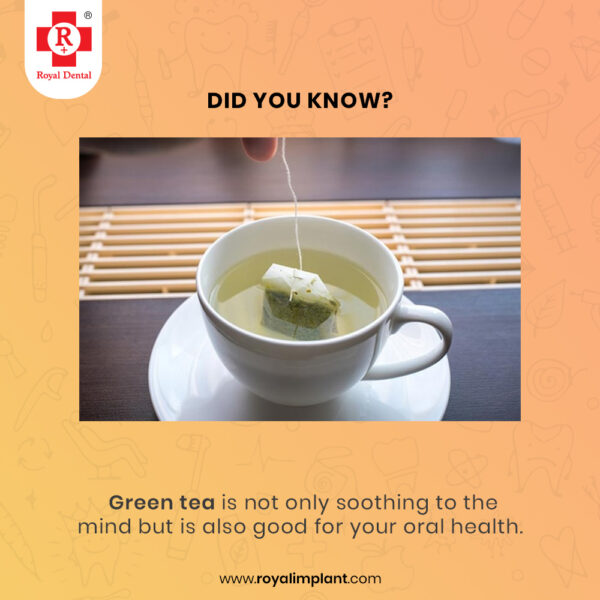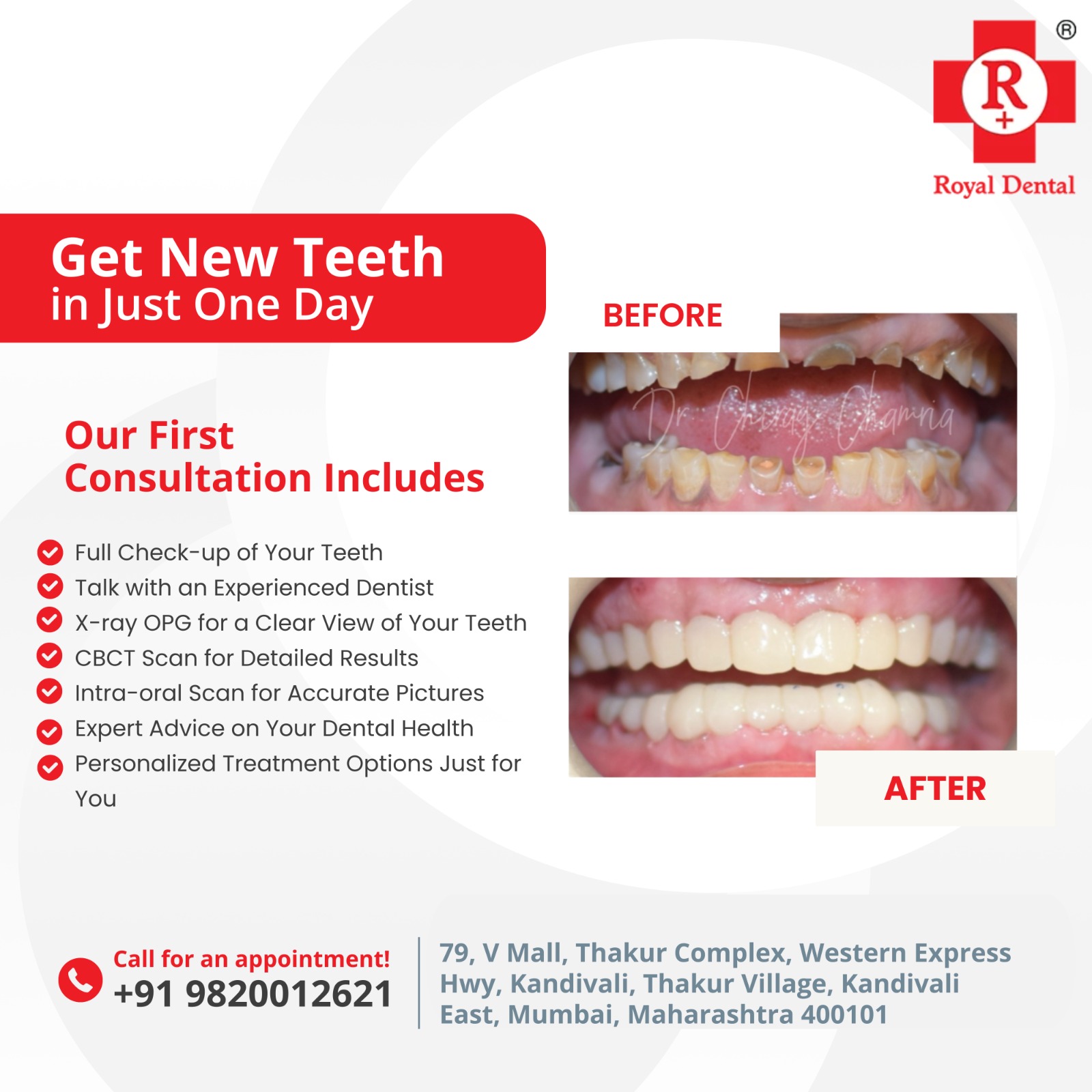What Is Tooth Extraction?
Tooth extraction is a dental procedure where a tooth is removed from its socket in the bone. Dentists or oral surgeons may recommend this treatment when a tooth is damaged beyond repair or poses a risk to surrounding teeth and oral health. While preserving natural teeth is always the goal, sometimes extraction becomes necessary for overall dental well-being.
Why Teeth May Need to Be Removed?
There are several reasons a dentist might advise tooth removal:
Severe Tooth Decay: When a cavity is too deep to be restored with a filling, crown, or root canal.
Gum Disease (Periodontitis): Advanced infection can loosen teeth, making them non-functional.
Impacted Teeth: Commonly wisdom teeth that don’t erupt properly and cause pain or crowding.
Overcrowding: To make space for orthodontic treatments like braces.
Fractured or Broken Teeth: Especially when the break extends below the gum line.
Infected Teeth: When infection spreads and can’t be resolved with antibiotics or root canal therapy.
Milk Teeth Retention: In children when baby teeth don’t fall out on time.
Types of Tooth Extraction
Tooth extractions are typically classified into two types based on the complexity of the procedure:
1. Simple Extraction: This is performed on visible teeth that are easy to access. The dentist uses a dental elevator to loosen the tooth and forceps to remove it. It’s usually done under local anesthesia and involves minimal recovery time.
2. Surgical Extraction: A more complex procedure required for impacted, broken, or unerupted teeth. The oral surgeon may need to make a small incision in the gum and possibly remove some bone around the tooth before extracting it. This is common with wisdom tooth extractions and may involve stitches and a longer healing period.

Common Reasons for Tooth Extraction
Tooth extraction is typically recommended when a tooth is damaged beyond repair or poses a threat to your oral health. While dentists strive to preserve natural teeth, certain conditions make removal the best option. Here are some of the most common reasons for tooth extraction:
1. Severely Decayed Teeth: When tooth decay reaches deep into the pulp and root, it can cause intense pain and infection. If a root canal is not sufficient to save the tooth, extraction becomes necessary to prevent the spread of infection to surrounding teeth or the jawbone.
2. Impacted Wisdom Teeth: Wisdom teeth often don’t have enough space to erupt properly. As a result, they may become impacted—trapped under the gum or bone—leading to swelling, infection, or pain. In such cases, surgical extraction is often required to avoid complications.
3. Gum Disease and Loose Teeth: Advanced periodontal (gum) disease can erode the bone and tissue supporting the teeth. When this support is lost, teeth can become loose or mobile. In cases where periodontal treatment fails, tooth extraction may be the only solution.
4. Orthodontic Reasons: In some orthodontic treatments, healthy teeth may need to be extracted to relieve overcrowding or to allow for proper alignment during procedures like braces. This is a strategic move to ensure a balanced and functional bite.
5. Fractured or Damaged Teeth: Teeth that are fractured below the gum line or severely broken due to trauma may not be restorable. If bonding, crowns, or root canal treatment are not viable, extraction is performed to prevent pain and infection.
6. Baby Teeth That Won’t Fall Out: In some children, baby teeth do not fall out naturally, blocking the permanent teeth from erupting properly. Extraction of these retained deciduous teeth ensures proper spacing and alignment for adult teeth.
When Is Tooth Extraction Necessary?
Tooth extraction is typically considered a last resort in dental care. Dentists aim to preserve your natural teeth whenever possible through treatments like fillings, crowns, or root canals. However, there are situations where keeping the tooth is no longer viable or safe, and extraction becomes necessary for your overall oral and general health.
Signs and Symptoms That May Indicate the Need for Extraction
If you’re experiencing any of the following symptoms, it may signal that a tooth needs to be removed:
Severe or persistent toothache that doesn’t respond to medication
Swelling or pus formation, indicating deep infection
Loose tooth due to gum disease or trauma
Crowding or misalignment that affects your bite or orthodontic treatment
Repeated infections or failed root canal treatments
Impacted wisdom tooth causing pain, swelling, or difficulty in opening the mouth
These signs should never be ignored and require a professional dental evaluation.
Diagnostic Process Before Tooth Extraction
Before deciding on extraction, your dentist will carry out a thorough evaluation, which includes:
Clinical Examination: To assess the condition of the tooth, gums, and surrounding area
Digital X-rays: To check the extent of decay, root damage, bone loss, or impaction
Medical History Review: To identify conditions (like diabetes, heart disease, or bleeding disorders) that may affect the extraction procedure
Treatment History: Any previous dental work on the tooth (e.g., crowns, fillings, root canals) is also taken into account
This process ensures that the extraction is necessary and safe.
How to Get Ready for a Tooth Extraction
If your dentist has recommended a tooth extraction, being well-prepared can help ensure a smooth and stress-free experience. Whether it’s a simple or surgical extraction, understanding what to expect and how to prepare can ease anxiety and reduce the risk of complications.
1. Initial Consultation and Examination
Before the procedure, your dentist or oral surgeon will perform a thorough evaluation, which includes:
Dental X-rays: These help assess the position of the tooth, its roots, and surrounding bone structure.
Medical History Review: It’s important to inform your dentist about any chronic illnesses like diabetes, high blood pressure, or heart disease.
Current Medications: Mention all prescribed, over-the-counter, and herbal medications. Some may interfere with anesthesia or healing.
Allergies or Bleeding Issues: These must be reported beforehand to avoid complications during or after the procedure.
2. Pre-Procedure Instructions
To ensure your safety and comfort, your dentist may advise the following before extraction:
Avoid eating or drinking for 6–8 hours before the procedure if you’re undergoing sedation or general anesthesia.
Take prescribed antibiotics or medications, especially if you have a heart condition or a history of infections.
Arrange for transportation, particularly if you’ll be sedated, as you may feel drowsy afterward.
Wear comfortable clothing and avoid makeup, perfume, or jewelry on the day of surgery.
Stop smoking or alcohol consumption at least 24 hours before extraction to support healing.
3. Special Considerations for Certain Patients
Pregnant women: Non-urgent extractions may be delayed; always inform your dentist if you’re expecting.
Diabetic patients: Blood sugar levels must be well-controlled before any surgery.
Patients with cardiac conditions: You may be given antibiotics to prevent infections, especially if you have artificial valves or a history of endocarditis.
Tooth Extraction Procedure Explained
Understanding the tooth extraction process can ease anxiety and help you feel more prepared. The procedure varies depending on whether it’s a simple extraction or a more complex surgical extraction. Here’s a detailed step-by-step breakdown of what to expect during both types:
1. Numbing the Area (Local Anesthesia): Before the extraction begins, your dentist will apply a local anesthetic to numb the area around the tooth. This ensures that you won’t feel any pain during the procedure—only slight pressure. For surgical extractions or anxious patients, sedation options may also be offered.
2. Simple Tooth Extraction Process: This method is used when the tooth is visible and easily accessible:
The dentist uses a tool called an elevator to loosen the tooth from the socket.
Once loose, the tooth is gently removed using forceps.
Bleeding is controlled with gauze, and you’ll be given aftercare instructions.
This is a relatively quick procedure and is commonly performed on teeth with minimal complications.
3. Surgical Tooth Extraction Process: Surgical extraction is needed when the tooth is:
Impacted (stuck in the gums or bone),
Broken at the gum line,
Or has curved or multiple roots.
Here’s how it works:
A small incision is made in the gum to access the tooth.
In some cases, bone around the tooth may be removed or the tooth may be cut into sections for easier removal.
The area is then cleaned, and stitches may be placed to help the gum heal properly.
Surgical extractions usually require more healing time and post-operative care.
4. Immediate Aftercare at the Clinic
Once the tooth is out, your dentist will place gauze to stop the bleeding.
You’ll be monitored briefly to ensure there are no immediate complications.
Instructions will be given for pain management, eating, and oral hygiene.
So Does Tooth Extraction Hurt?

No, tooth extraction does not hurt during the procedure because local anesthesia is used to numb the area. You may feel pressure, but not pain. After the extraction, mild discomfort or swelling is normal and can be managed with medication and proper aftercare. For more complex cases or anxious patients, sedation or general anesthesia may be used to ensure comfort. After the procedure, some soreness, swelling, or mild discomfort is normal and can be managed with prescribed painkillers or over-the-counter medication.
Risks and Complications of Tooth Extraction
Here are the potential risks and complications associated with tooth extraction:
Dry Socket:
Occurs when the blood clot at the extraction site dislodges or fails to form, exposing the bone and causing intense pain.Infection:
Bacteria may enter the extraction site, leading to swelling, fever, bad breath, or pus discharge.Prolonged Bleeding:
Especially common in patients with bleeding disorders or those taking blood-thinning medications.Swelling and Bruising:
Mild to moderate swelling and bruising around the extraction area are normal and usually subside within a few days.Nerve Injury (Rare):
If the tooth is near a major nerve, it may cause temporary or permanent numbness or tingling in the lips, chin, or tongue.Jaw Stiffness or Soreness:
Especially after surgical extractions or wisdom tooth removal, some patients may experience difficulty in opening the mouth.Sinus Issues (for upper molars):
In rare cases, upper tooth extractions can affect the sinus lining, leading to sinus discomfort or communication.Delayed Healing:
Poor oral hygiene, smoking, or certain medical conditions can slow down the healing process.
Following proper post-extraction care and your dentist’s instructions can significantly reduce the chances of complications.
Tooth Extraction Recovery Timeline
Recovery from a tooth extraction typically follows this timeline:
Day 1: Blood clot forms; mild bleeding and swelling are normal.
Days 2–3: Swelling peaks, pain reduces; stick to soft foods.
Days 4–7: Tissue begins to heal; discomfort subsides.
Week 2: Most healing is complete for simple extractions.
3–4 Weeks: Deeper healing continues, especially after surgical removal.
Full bone healing may take up to 8–12 weeks. Follow aftercare instructions for smooth recovery.

What Not to Do After a Tooth Extraction
1. Do Not Smoke or Use Tobacco Products
Smoking reduces blood flow and delays healing. It also increases the risk of dry socket, a painful condition where the blood clot gets dislodged.
2. Avoid Drinking Through a Straw
The suction created while using a straw can dislodge the protective blood clot at the extraction site, causing bleeding and pain.
3. Don’t Rinse Vigorously or Spit Forcefully
Rinsing too aggressively or spitting can also disturb the blood clot. Gently rinse your mouth only after 24 hours, using a saltwater solution if advised by your dentist.
4. Skip Hot Foods and Beverages
Hot items can dissolve or disturb the clot and may cause irritation or bleeding. Stick to cool or lukewarm foods for the first couple of days.
5. Avoid Hard, Crunchy, or Sticky Foods
Chips, nuts, popcorn, or chewy items can get stuck in the socket or cause injury. Opt for soft foods like yogurt, mashed potatoes, and soups.
6. Don’t Touch the Extraction Site with Your Tongue or Fingers
Constantly poking the area can delay healing and introduce bacteria, leading to infection.
7. Avoid Strenuous Activity
Physical exertion can raise blood pressure and trigger bleeding. Rest well for the first 24–48 hours.
8. Don’t Skip Medications or Follow-Up Appointments
If your dentist prescribed antibiotics or painkillers, take them as directed. Also, attend follow-up visits to ensure proper healing.
When to See the Dentist After a Tooth Extraction?
After a tooth extraction, it’s normal to experience mild discomfort, swelling, and slight bleeding. While most people heal without any issues, certain signs may indicate the need for a dental follow-up. Knowing when to contact your dentist can help prevent complications and ensure proper healing.
Situations That Require a Dental Visit
1. Persistent or Severe Pain
If pain does not improve after a few days or suddenly becomes intense, it could be a sign of dry socket or infection.
2. Continued Bleeding
Light bleeding is normal during the first 24 hours. However, if bleeding persists beyond this or becomes heavy, it’s important to see your dentist.
3. Swelling That Doesn’t Subside
Mild swelling is expected, but if it continues to increase or doesn’t reduce within 2 to 3 days, it may need attention.
4. Signs of Infection
Pus, a foul taste in the mouth, or bad breath can indicate an infection at the extraction site.
5. Fever or General Illness
A raised body temperature, chills, or feeling unwell can suggest a spreading infection and should not be ignored.
6. Numbness That Persists
If numbness in the lips, tongue, or chin continues several hours after the procedure, it may be related to nerve involvement.
7. Difficulty Opening the Mouth or Swallowing
These symptoms can be signs of a deeper infection or inflammation that needs prompt evaluation.
Follow-Up Appointments
Our tooth extraction dentists recommend a routine follow-up visit within a week of the extraction, especially if stitches were placed. This helps ensure the site is healing correctly and allows the dentist to address any concerns early.
Tooth Extraction Cost in Mumbai
The cost of tooth extraction in Mumbai typically ranges from ₹1,000 to ₹8,000, depending on factors such as the complexity of the extraction, the type of tooth involved (e.g., wisdom tooth), and whether surgical intervention is required. Simple extractions are generally more affordable, while surgical or impacted tooth extractions may cost more due to additional procedures like X-rays or anesthesia. At Royal Dental Clinics in Mumbai, we offer personalized care and transparent pricing, ensuring you receive high-quality treatment that suits your dental and budgetary needs.

Why Choose Royal Dental Clinics for Tooth Extraction in Mumbai?
Advanced Technology & Painless Procedures:
We use state-of-the-art equipment and techniques to ensure minimally invasive and virtually pain-free tooth extractions.Single Sitting Treatments:
Most extractions are completed in just one visit, saving patients time and reducing the need for multiple appointments.Expert Oral Surgeons:
Procedures are performed by highly qualified specialists like Dr. Chirag Chamria, known for handling complex cases with precision and care.Patient Testimonials and Success Stories:
Our clinic is backed by decades of trust, with numerous satisfied patients sharing their positive experiences and successful treatment outcomes.Personalized Patient Care:
Every case is evaluated individually, ensuring a treatment plan that best suits your dental needs and comfort.
Book Your Tooth Extraction Appointment Today!
Experience safe, painless, and expert care for your tooth extraction in Mumbai at Royal Dental Clinics. With advanced technology, single-sitting treatments, and experienced oral surgeons, your comfort and recovery are our top priorities. Don’t wait—book your appointment at Royal Dental Clinics today and take the first step toward a healthier smile.






